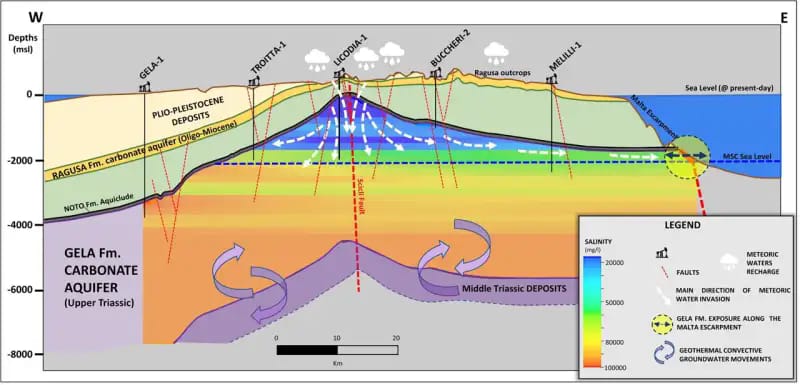In an astonishing revelation beneath Sicily’s Hyblaean Mountains, a colossal reservoir of ancient water, dating back six million years, has been uncovered. Nestled deep within Earth’s crust, this remarkable aquifer has remained untouched and immobile since its formation.
This discovery was made in the wake of new research that pinpointed the existence of the vast underground cache. It is believed that the water was sealed off during a period known as the Messinian salinity crisis. This dramatic episode in Earth’s history saw the Mediterranean Sea evaporate significantly due to tectonic shifts near the Strait of Gibraltar, which cut off the sea’s connection to the ocean. The crisis allowed rainwater to seep into the seabed, eventually becoming trapped far below the surface.
A study, which was recently unveiled in the journal Communications Earth & Environment on November 22, details the findings about this ancient water reserve. The aquifer, which lies between 700 and 2,500 meters beneath the Hyblean plateau, has remained in its subterranean domain ever since it was ensnared there.
Researchers delved into the mysteries of the deep by examining data from the Gela formation, which is not only a noted oil field but also a site with multiple deep wells. By tapping into this publicly available data, they were able to construct intricate 3D models of the aquifer. These models suggest that the hidden water reserve contains approximately 17.5 cubic kilometers of freshwater. That’s over double the volume of water held within the depths of Scotland’s Loch Ness.
The team employed their 3D renderings to peer into the geological past and reconstruct the ancient landscape that once dominated the area. Their work provides a unique glimpse into a long-gone era and uncovers the secrets of a water supply older than human civilization itself, lying in wait beneath the rugged Sicilian terrain

